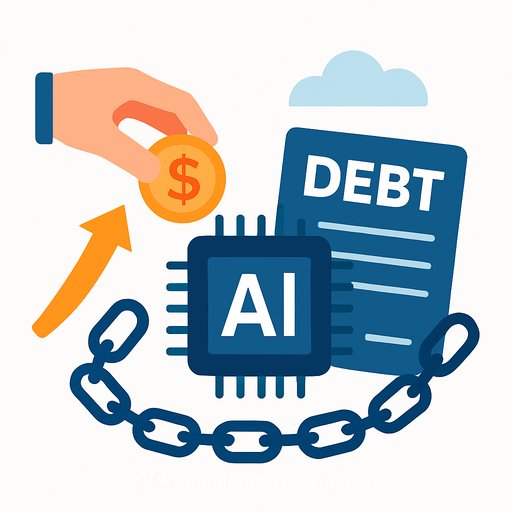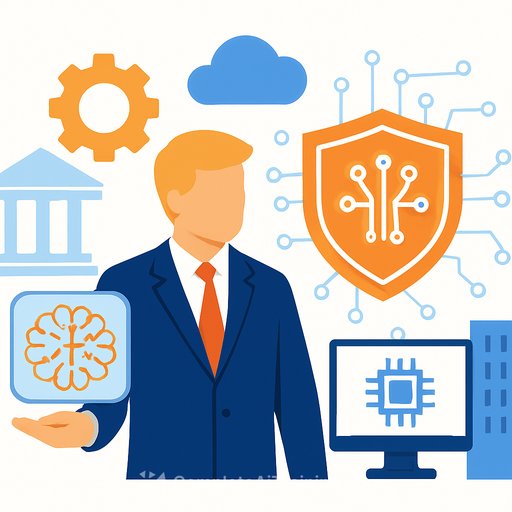AI Is Eating Software: Three Ways Financial Services Must Adapt
Software ate distribution, then business models. Now AI is eating software. It's not just a feature layer. It's a new interface for how customers search, decide, pay, and get served.
Finance leaders don't need more hype. You need a plan to protect margins, move faster than regulators and competitors, and turn data into decisions at scale. Here's what to do next.
The new user experience paradigm
Search is shifting from links to answers. As large language models become the first stop, the funnel compresses. Discovery, evaluation, purchase, and support can all happen inside an AI interface.
This is already live. Stripe integrated payments into ChatGPT, allowing purchases within the conversation. Similar efforts from major wallets and ecosystems are pulling marketplaces, payments, and AI interfaces into one surface.
Trading workflows are moving the same way. Automation isn't new, but AI lowers the threshold for anyone to build repeatable, rules-based processes with institutional-grade logic. As inference pushes to devices, the line between software and hardware fades. The experience becomes: ask, decide, execute-on any screen.
Training data: new frontiers
Big models trained on bigger datasets created a step change-but cheap gains are harder to find. Data quality now matters more than data volume. Agentic systems can even refine their own training sets, closing the loop between outcomes and inputs.
This demands an operational, not static, approach to data. Data architecture, lineage, access controls, and continuous quality monitoring must be treated as a live system. Firms that do this well build compounding advantages in accuracy, latency, and explainability.
Investing in adaptability
AI is not just tooling. It rewrites where work happens and who does it. In finance, that affects supervision, client experience, risk, and unit economics.
The firms that win will align people, infrastructure, and governance-then iterate fast. Here are three moves that pay off.
Three ways financial services must adapt
- 1) Invest in talent
You need people who understand data, models, and money. Hire for data engineering, MLOps, model risk, and product. Upskill quants and analysts in prompt design, feature stores, and evaluation. Create cross-functional pods that ship prototypes in weeks, not quarters. Tie incentives to shipped impact and documented risk controls. - 2) Strategically scale up digital infrastructure
AI workloads are spiky and expensive. Use a cloud-first, GPU-aware plan with workload tiers (experimentation, pre-prod, prod) and clear cost guardrails. A unified lakehouse (e.g., Databricks with Apache Spark and open table formats) helps centralize data, simplify governance, and bring ML closer to production. Add a feature store, model registry, automated retraining, and monitoring to keep drift in check and latencies low. - 3) Establish best practice
Build a practical policy stack: data architecture standards; CI/CD for data and models; model validation and documentation; human-in-the-loop controls for high-risk use cases; audit trails and incident response. Bake in security (PII minimization, encryption, role-based access), fairness testing, and vendor risk reviews. Treat red-teaming and evaluation suites as part of production, not research.
Integrated AI strategies
These moves work together. The right team makes use of scalable infrastructure. Good infrastructure makes governance enforceable. Governance builds trust so you can ship faster.
Some firms are already executing on this model-standing up unified data platforms, consolidating pipelines, and integrating machine learning into core decision points. The outcome: cleaner data, lower time-to-insight, and stronger client service.
Next steps for finance leaders
- Pick three money-on-the-table use cases (e.g., client onboarding automation, sales intelligence, trade surveillance) and build thin slices to production.
- Stand up a data quality scorecard and make it visible to executives weekly.
- Create an AI review board that approves models, monitors outcomes, and owns incident playbooks.
- Budget for GPUs and FinOps. Treat inference costs like a P&L line you optimize monthly.
- Upskill your team with practical, finance-focused AI training and tools. A curated starting point: AI tools for finance.
About Finalto's approach (case example)
One prime brokerage in the sector has implemented a unified data and analytics platform to scale cloud computing, integrate machine learning, and apply open table formats across the stack. In practice, that translates into scalable infrastructure, stronger internal data management, richer insights, and enhanced client service across multiple asset classes, including CFDs on Equities, Indices, Commodities, Cryptos and rolling spot FX, Precious and Base Metals, and bespoke products such as NDFs.
Important information
All opinions, news, research, analysis, prices or other information are provided as general market commentary and not as investment advice. Any potential results discussed are not guaranteed. Information may be derived from publicly available sources, company reports, personal research, or surveys. Past performance is not indicative of future results. Trading carries risk of capital loss. Service available to professional clients only.
Your membership also unlocks:






